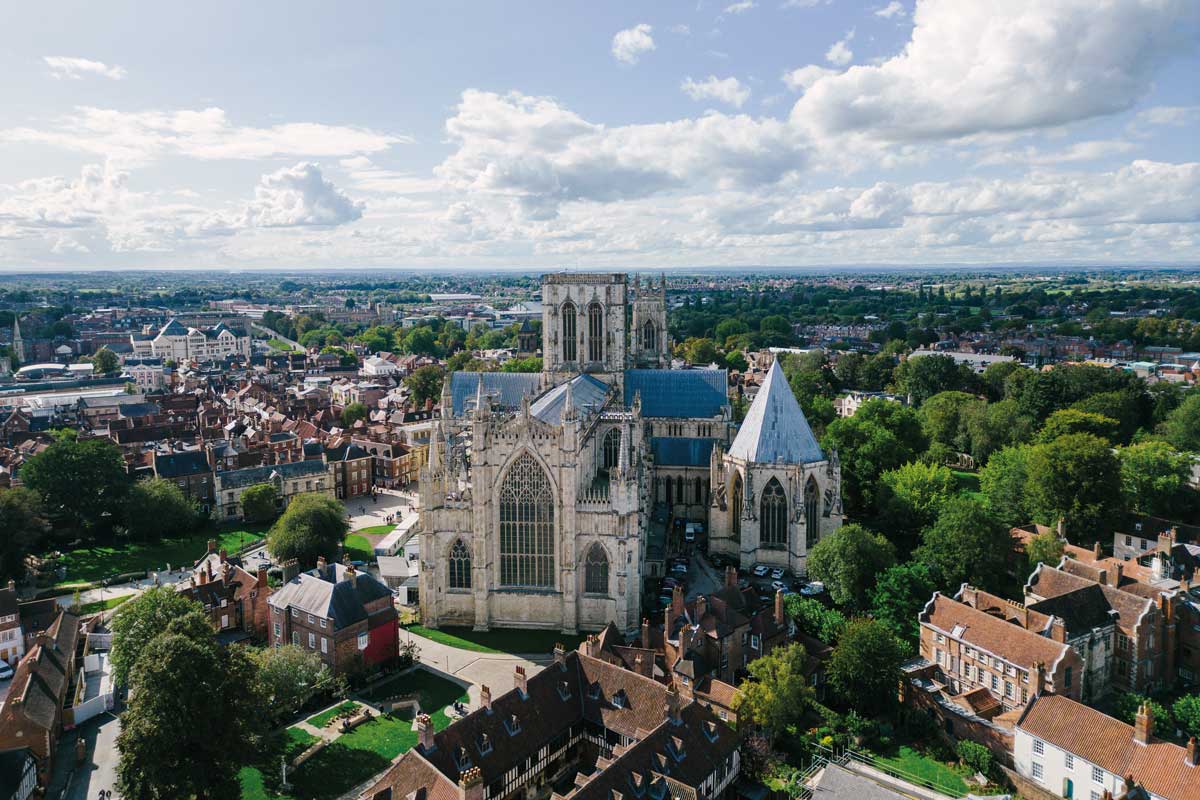In 2022, City of York Council granted planning permission for a new Centre of Excellence for Heritage Craft Skills and Estate Management, a first-of-its-kind project that will see the creation of a world-class campus facility for research, education and training in the traditional craft skills required to preserve and maintain the heritage estate for future generations.
The project, due for completion later this year, will embrace both traditional skills and modern technology and will encompass two sites – The Heritage Quad and The Works and Technology Hub.
Following an earlier visit to York Minster by Clare Howcutt-Kelly alongside Simon Bradbury, of Stone Industry Group, which is supplying the Turrini water and dust management systems for the project, it’s now time for a catch up.
CHK: It’s been a busy few months for you and the York Minster team. Can you give me an update on the latest developments?
LC: We marked the start of construction work on the Centre of Excellence with an official ceremony last autumn. The ceremony, which took place in the grounds of what will become The Heritage Quad, was attended by the Dean of York, the Very Revd Dominic Barrington, and Andy Gatenby, managing director of Simpson, the specialist heritage contractor delivering the works.
Start on site at the Centre of Excellence was a significant milestone in our five-year journey to establish the York Minster Precinct as a hub for preserving and maintaining heritage craft skills. It also marked an important moment of our award-winning Neighbourhood Plan, which sets the policy for the biggest programme of planned works at York Minster and its Precinct in 150 years.
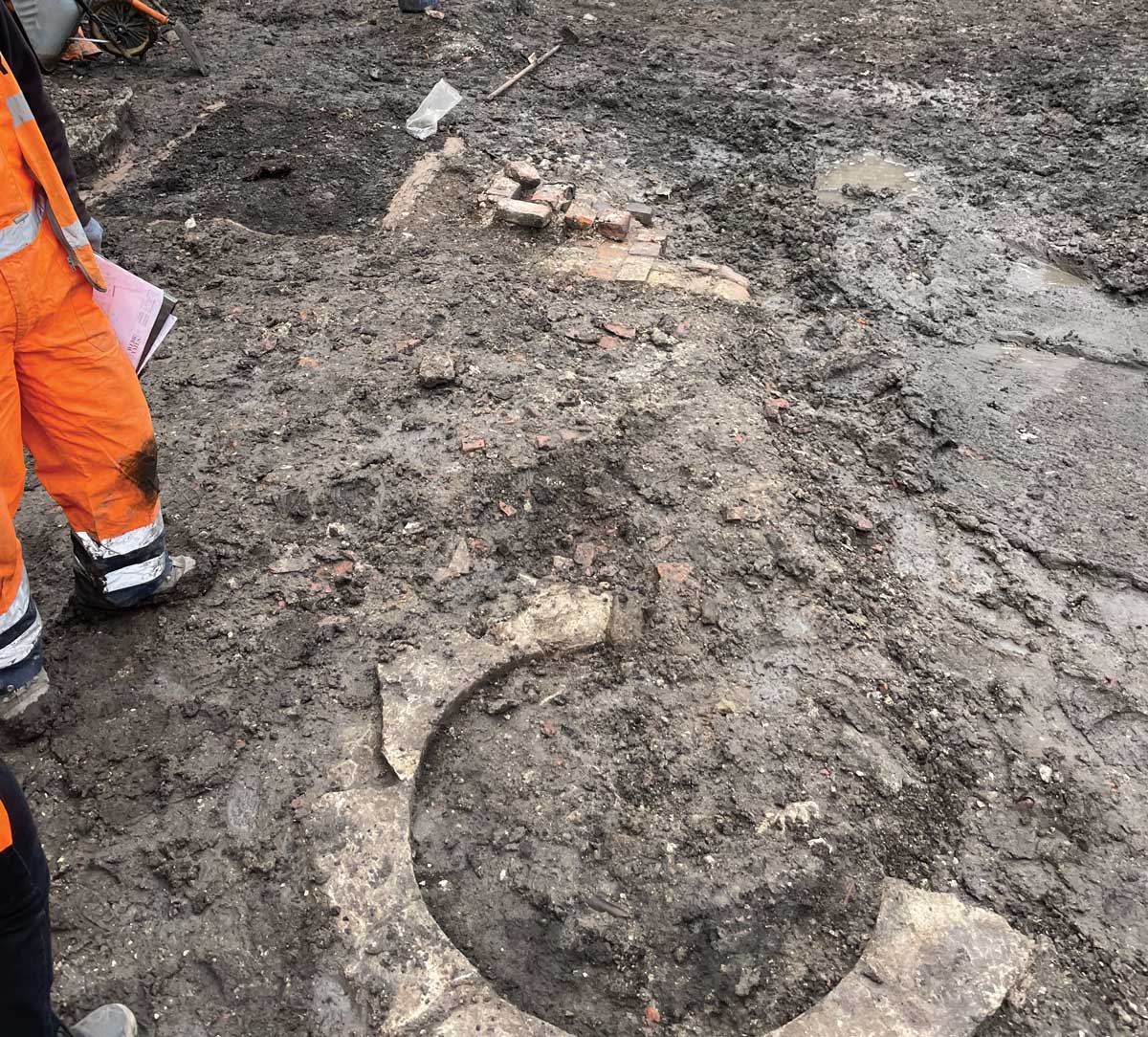
Mid-medieval archaeology was discovered on the site of The Technology Hub
CHK: Have you encountered any challenges to date?
LC: As people are aware the York Minster site is one of immense historical interest and value and early construction work uncovered archaeology at both sites. We have unearthed some fascinating Roman and medieval building remains and objects. All discoveries have been excavated and recorded and work is back on schedule.
Watching the plans transition into emerging buildings over the last few months has been incredibly exciting for the whole team as our vision becomes a reality in bricks and mortar; both sites are progressing well.
Of course, like many construction projects, we’ve encountered numerous challenges since we began our journey in 2018 through rising costs and supply chain issues. We continue to seek further funding and donations to support the project and we are grateful of the support we’ve had so far.
CHK: Remind me about the key details of the project.
LC: The Centre of Excellence really is a first-of-its-kind project that will see the creation of a world-class campus facility for research, education and training. It forms part of our approach to creating a sustainable future for both the cathedral building and its surrounding precinct in response to the growing climate change challenges, and will ensure we can respond to urgent repairs more quickly. Income generation is also a key part of the vision for the project to ensure that we always have the funds needed to care for the ancient fabric of York Minster and its complex estate.
Both The Heritage Quad and The Works and Technology Hub will provide new facilities for craftspeople, including York Minsters stonemasons, and house and deliver training in modern techniques and processes to apprentices and students from across the world, working with cutting edge digital technology.
Existing buildings within the Precinct will also be sustainably reordered, repurposed and renewed to provide new workspace and associated facilities, enable greater engagement and interaction with the public around key crafts and trades, and allow improved links with education.
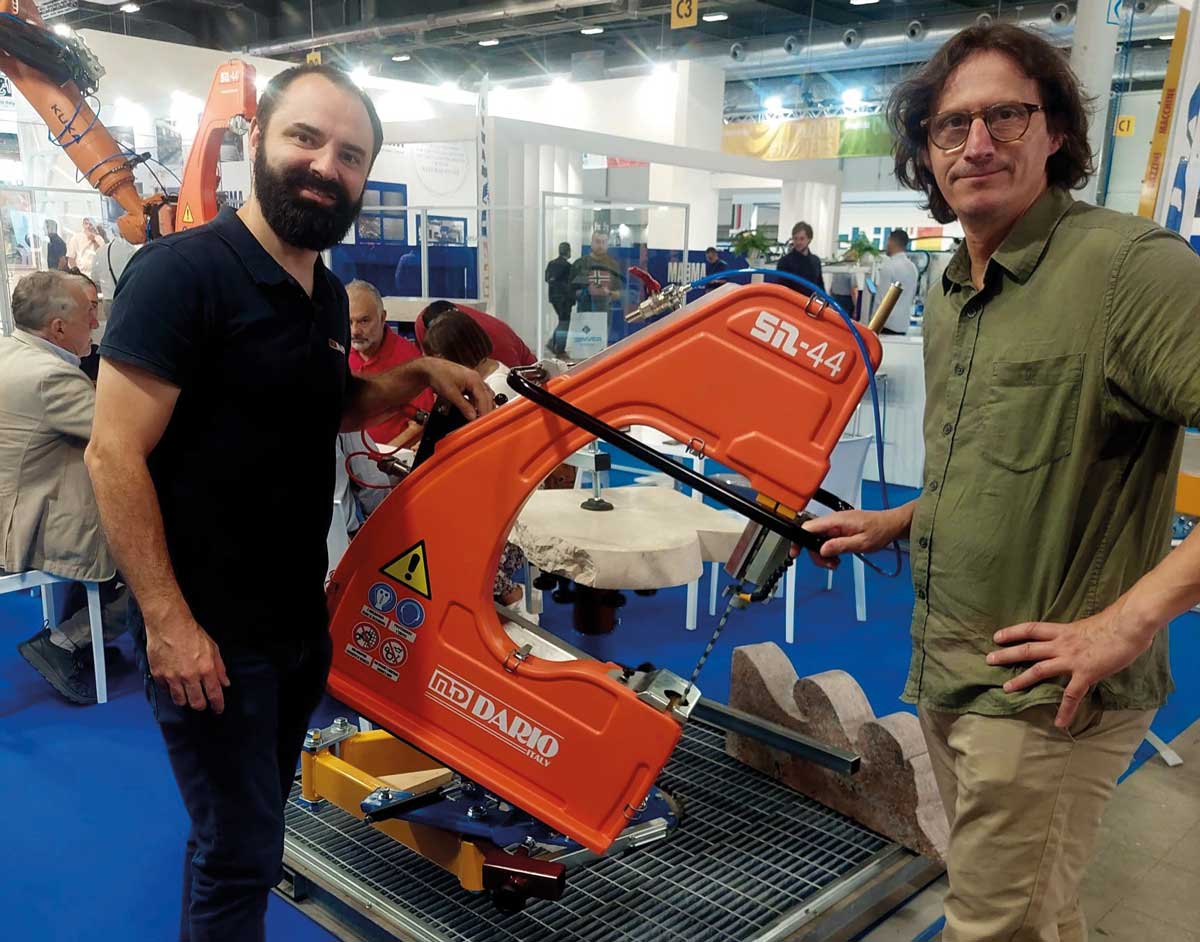
Lee Godfrey at Marmomac with Ugo Dario from MD Dario who will install an articulated wire saw at York Minster
CHK: What will the Centre of Excellence mean for stonemasons at York Minster?
LC: Stonemasons have been active at York Minster for more than 800 years. The skills and techniques employed by them today have been passed down through the centuries as they continue to be responsible for the ongoing care and restoration of the cathedral and its surrounding precinct.
Today, we believe that it has never been more important that these ancient skills are sustained through continuous investment in the next generation of skilled cathedral stonemasons. Key steps in achieving this are through investment in new technology and investment in the facilities we provide to our craftspeople.
Therefore, the construction of our Centre of Excellence marks an exciting opportunity for York Minster to harness modern technology to support and underpin the renowned craft skills that form a vital part of the cathedral’s future. We often refer to the strapline 'we are embracing the future to care for the past'.
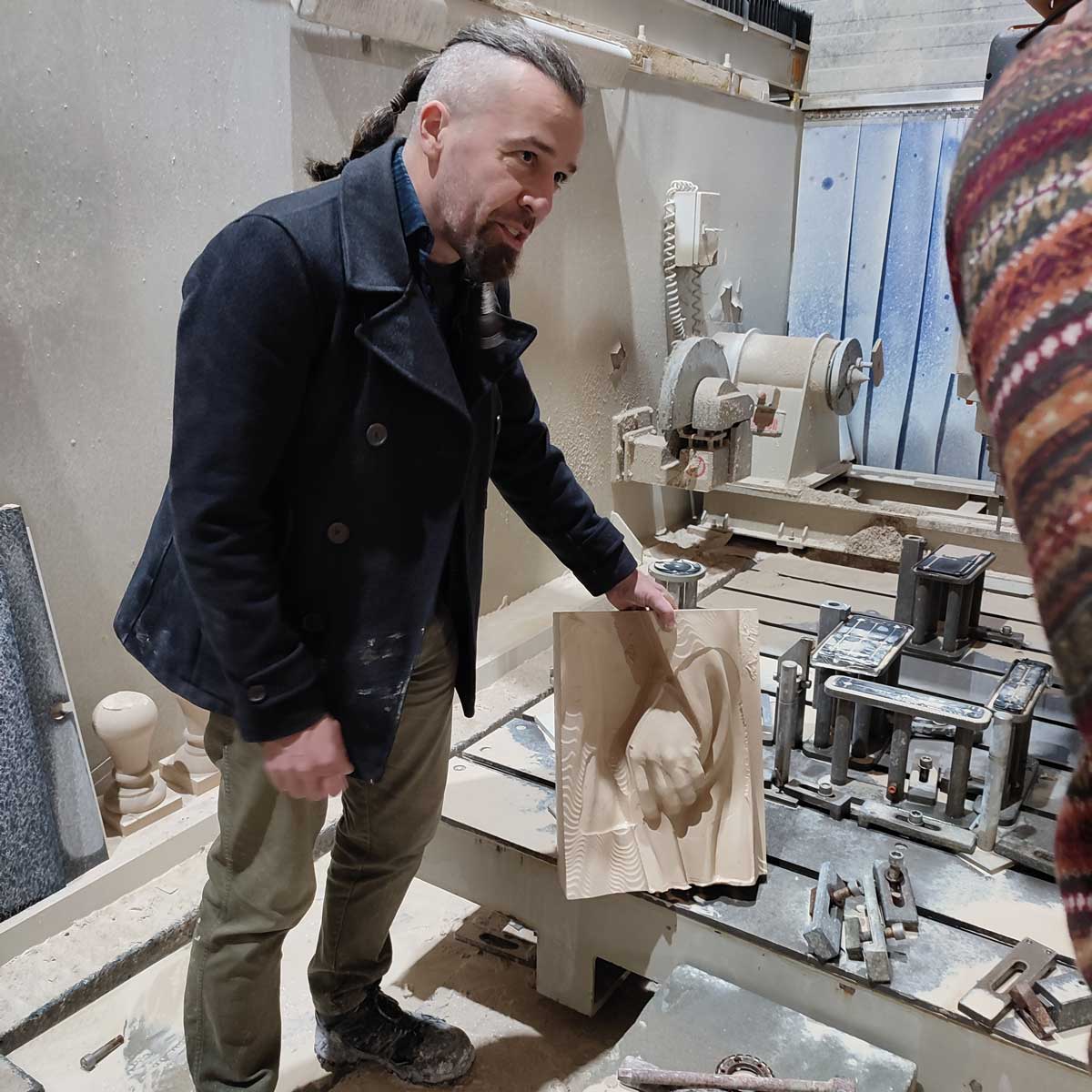
Richard Bossons, the York Minster mason who designed and created the statue of Queen Elizabeth II discussing a practice piece of the statue's hand with Anthony Kleinberg of Abbey Masonry
CHK: There is an argument that new technologies could actually hinder traditional craft skills rather than help them. Do you agree?
LC: Advances in technology in stonemasonry are in fact nothing new. Although traditional craft skills have remained broadly similar since York Minster was originally built, a key development since the early 20th century has been the use of mechanical techniques for lifting and sawing stones.
York Minster is today one of only 13 of 42 Anglican cathedrals in the UK to retain its own dedicated body of craftspeople. Collectively they are part of the Cathedrals Workshop Fellowship which is committed to creating a new generation of craftspeople equipped with the specialist skills required to care for the nation’s cathedrals and historic buildings in the 21st century.
We are proud to be playing a leading role in this cause through the introduction and advancement of technology in a religious heritage setting.
Our new statue of Queen Elizabeth II has been created using all of the technology which will be installed in the Hub, and it has been hugely exciting to learn more about the positive opportunities the machines will bring to our work. Masons have always used the best technology available to them and this is no different.
Each stone that comes out of the Centre of Excellence will continue to be hand finished after being roughed out by our new machines. It is really important to us to protect tradition craft skills at the Minster whilst ensuring a sustainable future for generations to come.
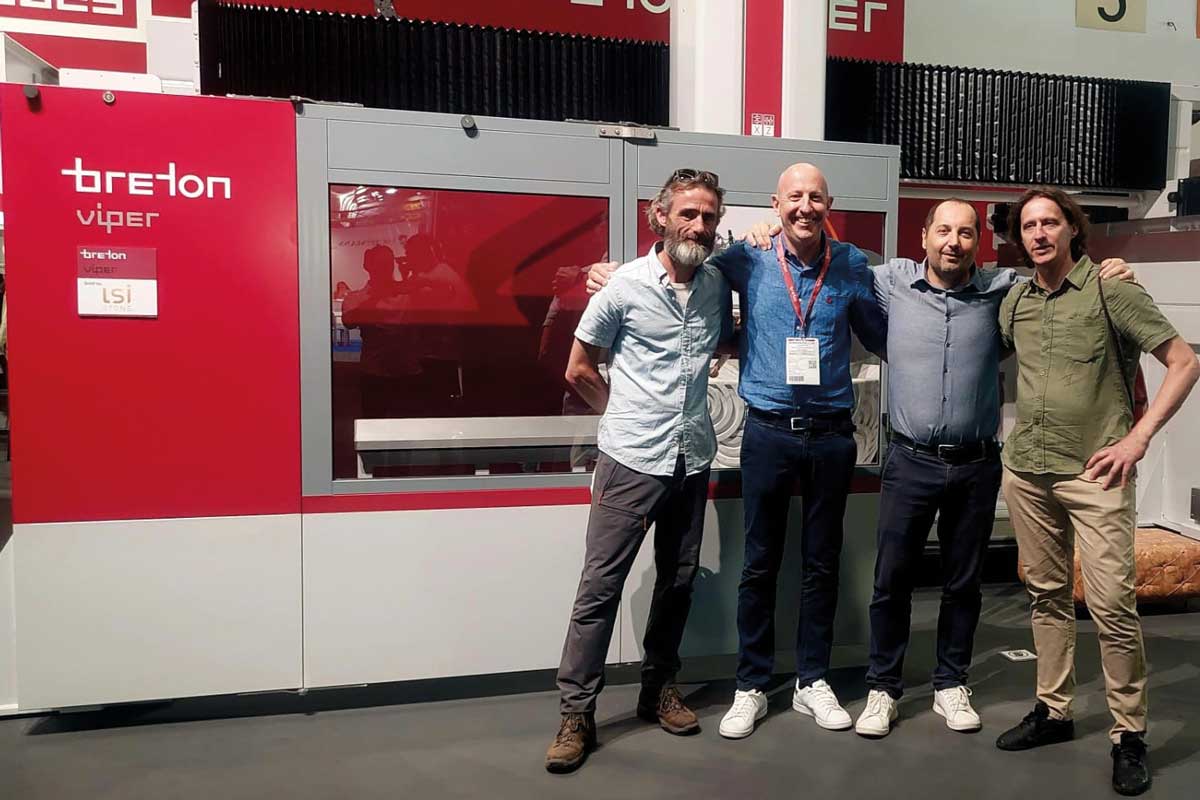
Lead masons Lee Godfrey and Peter Arts at Marmomac with Michele Padovan and Fabio Bragagnola from Breton who will supply two 5 axis CNC machines to the Minster next year
CHK: What are the latest updates on the new machinery being installed at the Minster?
LC: The Works and Technology Hub, housed on the site of the former stoneyard, will create space to house two state-of-the-art 5 Axis CNC saws and a new wire saw. New lifting systems will be installed by Streetcrane, and additional space created to reinforce our supply of stone on site. To support the introduction of these facilities, members of the York Minster team have completed factfinding visits and informal training in recent times.
For example, members of our team have spent significant time at stonemasonries across the UK and Europe, including Abbey Masonry in Wales, Schwartzenberg Stonemasonry in Germany and more recently Lapicida in Knaresborough and we are incredibly grateful for the support we have received.
Last September, lead fabric and conservation mason Lee Godfrey and lead setting out mason Peter Arts attended Marmomac in Italy. This was a valuable opportunity to meet supply chain partners including Breton, MD Dario and Stone Industry Group who are supplying the two 5 axis CNC machines, an articulated wire saw and water recycling plants respectively.
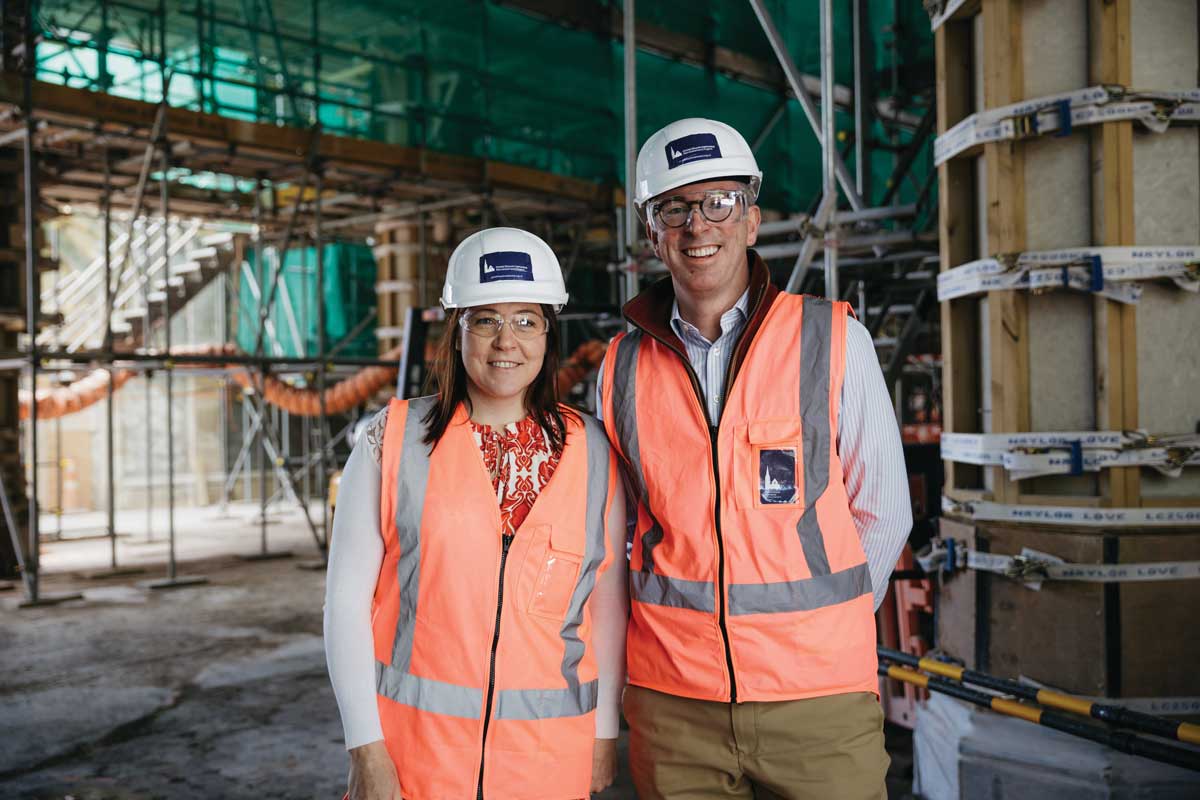
Laura Cotter, research and partnerships manager with Alex McCallion, director of works and precinct during their visit to Christ Church cathedral in New Zealand
CHK: What part is the Centre of Excellence playing in collaboration and learning?
LC: Although stonemasons at York Minster have frequently visited other stoneyards and heritage institutions across the world to keep abreast of new machinery and technology over the years, the development of the vision for the Centre of Excellence has accelerated the requirement for communication and learning.
It has allowed us to build a network of supportive international partners including Milan, Pisa, Cologne and Nidaros cathedrals in Europe. Interestingly what has become very clear from these visits is that despite where you are in the world all heritage bodies are dealing with very similar issues and we can help each other.
Invitations to share our Centre of Excellence vision with the international community have also helped foster new partnerships and learning opportunities. Myself and Alex McCallion, the Minster’s Director of Works and Precinct, visited Washington National Cathedral and Easy Stone Centre in Virginia, America, who were instrumental in guiding conversations at the start of the project. Most recently we were invited to visit Christ Church Cathedral’s restoration project to share knowledge and ideas.
Alongside continuing to teach based on traditional craft skills, the Centre of Excellence will also house and deliver training in modern techniques and processes, working with cutting edge digital facilities including modern CNC technology, 3D scanning and computer aided design which can be applied to heritage estates globally. For our apprentices, the working environment they’ll experience is going to be truly incredible.
CHK: How can companies in the stone industry benefit from the Centre of Excellence?
LC: Thanks to the Minster leading the way through the Centre of Excellence and its adoption of new technology, a commercial element of the stoneyard will be more firmly established, supporting other ecclesiastical institutions, country houses and private clients, in turn enabling the Minster to become more financially sustainable as the cost of caring for the Minster continue to increase.
Our measures are indicating 40%-time savings using the technology and if we can pass that benefit on to other institutions this will be a success for the wider heritage sector.
- For more information on the Centre of Excellence, please visit: yorkminster.org/discover/centre-of-excellence-for-heritage-craft-skills-and-estate-management/
- Donations to the Centre of Excellence can also be made by emailing the York Minster Fund at ymf@yorkminster.org

